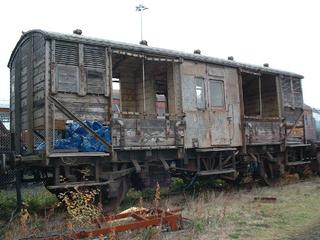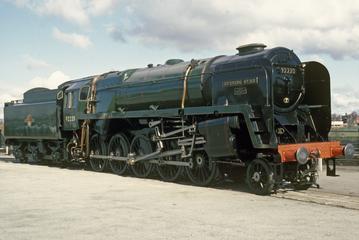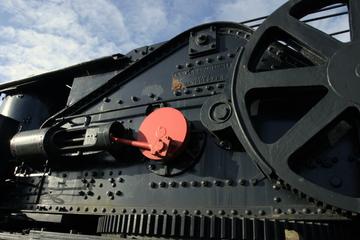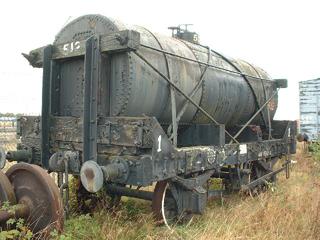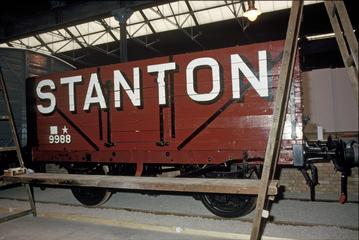
British Railway Seacow Ballast wagon, DB982896
Bogie Ballast hopper, made at British Rail Engineering Limited Shildon in 1973, withdrawn from service 2006
A design of high-capacity bogie ballast hopper was introduced by the London & South Western Railway in 1903, the company having opened a ballast quarry at Meldon, Devon in 1897. Subsequent examples took their cue from this successful design, with more built by the Southern Railway in the 1930s. Ballast was discharged through three sets of chutes, one in the centre to drop ballast between the sleepers and two either side to create shoulders either side of the track. The rate at which the ballast was dropped was regulated using handwheels located at either end of the wagon.
With relatively few modifications, the type was ultimately adopted by British Railways (BR) as a standard design. This was the vacuum-braked ‘Walrus’, the name reflecting BR’s convention of naming its engineering vehicles after marine wildlife. This was later developed into the Shildon and Ashford-built ‘Sealion’ and ‘Seacow’ hoppers from 1971; the former featuring dual air and vacuum braking and the latter air brakes with vacuum through piping. They were given the TOPS codes YGH and YGB respectively.
In the 1990s the vacuum brake cylinders on the YGH ‘Sealion’ wagons were removed. They were reclassified YGB ‘Seacows’ where the vacuum brake through pipes were retained, or YGA ‘Seacows’ when converted to air brakes only. Some of the existing YGB fleet was also converted to this specification. In preparation for privatisation in the mid-1990s, the fleet was divided between three regional freight companies created from BR’s Trainload Freight business for sale as going concerns to private buyers. These were Load Haul, Mainline and Transrail, and all were absorbed by English, Welsh & Scottish Railways (EWS) in 1996. The type remained in use into the 21st century.
Built in 1973, No DB 982896 is one of a batch of 360 dual braked YGH ‘Sealions’ built between 1972 and 1974 and was later converted to YGB specification. Acquired by EWS, it still retains its Load Haul livery, and marks an important period of change for Britain’s railways.
Details
- Category:
- Locomotives and Rolling Stock
- Object Number:
- 2020-30
- Materials:
- steel (metal)
- type:
- hopper wagon
- credit:
- D B Schenker
